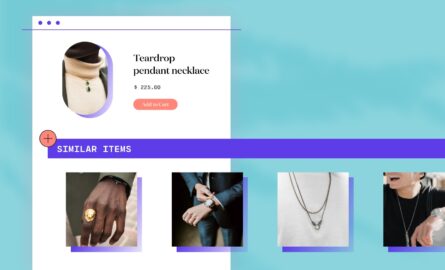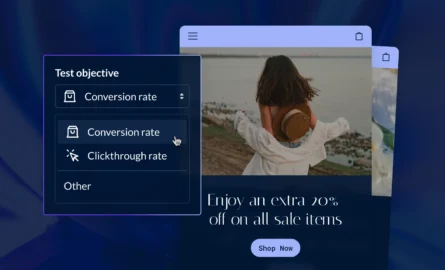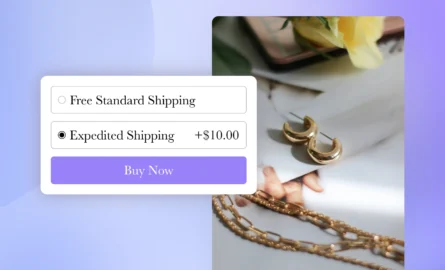15 Best Shopify Email Marketing Apps For Savvy Sellers (+ Tips For Success)
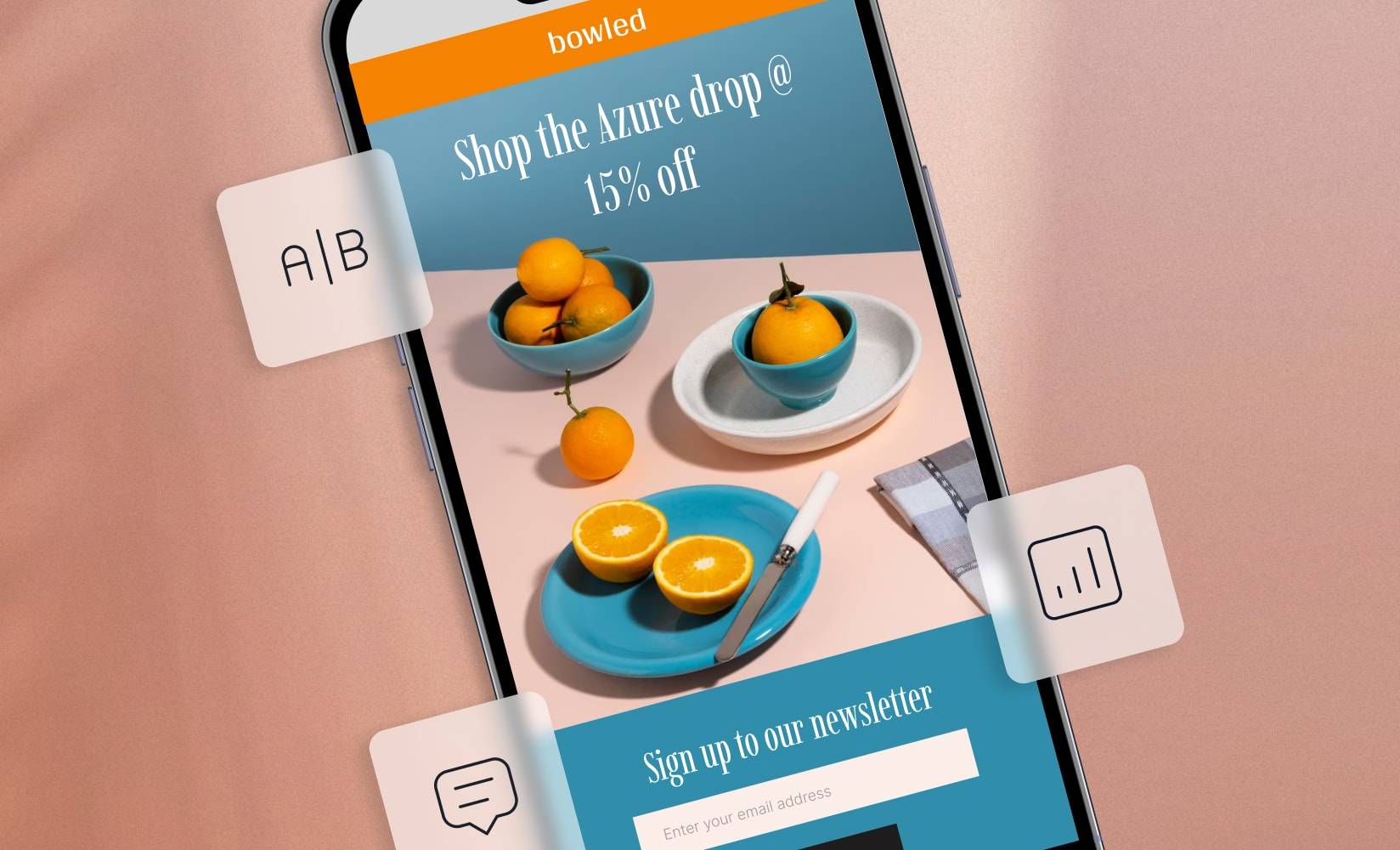
Owning the customer relationship is a key driver of success in ecommerce.
Engaging with your customers to stay top of mind, keeping open communications, and capturing valuable product feedback are critical actions that can propel you towards further growth.
No matter where you sell, you can accomplish all of these goals through one powerful channel: email marketing.
This article focuses on Shopify email marketing and why it’s important. You’ll also discover tools and tips that can boost your email strategy.
Read on to learn:
#cta-visual-pb#<cta-title>Create product pages that bring your conversions home<cta-title>Use Shogun Page Builder to build a website that makes your email subscribers excited to click.Start building for free
Why do Shopify brands need email marketing?

Email marketing is a highly effective tactic to attract, engage, and retain your audience.
For Shopify brands and ecommerce merchants in general, it delivers multiple concrete benefits. Let’s look at the top advantages of this valuable marketing channel.
Improved reach and conversions
Globally, there are over four billion daily email users, and email marketing lets you tap into that massive pool.
It also guides consumers’ purchasing decisions, influencing 59% of shoppers. Additionally, 50% of customers have also made a purchase at least once a month because of email marketing.
Boost revenue
Launching well-crafted, targeted email campaigns can greatly improve your brand’s earnings.
Essence of Email, for instance, helped Food to Live overhaul their email marketing strategy, which significantly boosted their income.
Their efforts to set up both templates and email funnels grew the healthy snack food brand’s email marketing revenue by 1,076%!
A powerful content distribution tool
Email marketing is an effective channel for disseminating content to your audience, making it understandably popular among marketers.
It lets you deliver valuable information such as product updates, promotions, and tips.
According to the Content Marketing Institute, up to 69% of marketers use email marketing as their main content distribution channel, making it the third-most popular behind a company’s website (90%) and blog (78%).
Better customer retention
With 66% of consumers expecting brands to recognize their individual needs, delivering personalized content is vital for your email marketing to succeed.
Not to mention, 70% of people say that how well a company understands their expectations affects their loyalty.
So, include your subscribers’ names in communications and tailor the content you deliver to their behaviors and interests.
Gain valuable feedback
Learning what customers like and dislike about your product or service is one of the best ways to improve your offering.
In this regard, email excels at extracting that information.
Send surveys to gather immediate feedback so you can act quickly on issues. Some Shopify email marketing tools even let you automate the process, which enables the continuous development of better products and services.
Superb return on investment (ROI)
An intricate and well-developed email marketing strategy can yield strong financial returns, so it’s no surprise that it’s widely adopted.
In fact, according to Litmus, you can expect an average ROI of $36 for every dollar you spend on email marketing.
What makes a strong Shopify email marketing service?

You’ve seen the advantages that come along with a Shopify email marketing service. But, how do you choose the right one? First, look for those with must-have features.
At a minimum, the email marketing service you pick should enable you to:
- Manage multiple email lists
- Create segmented lists
- Craft branded emails with the help of pre-designed templates
- Build email sequences and workflows
Multiple email list management
Keeping an entirely separate list instead of using a tag or segmentation may be necessary when you have audiences that you know will not overlap. As you grow, you may want to develop different subscription lists based on segmented interests.
For example, if you sell clothing, you may need separate email lists for men’s and women’s products.
Or, if you sell items across multiple categories, such as a handbag brand that also sells jewelry, you may want unique lists for each product line.
Audience segmentation and personalization
Sending personalized communications that match your audience’s interests can maximize engagement and compel them to click through your emails.
Segment your list based on audience interests and personalize your email content accordingly to keep your emails relevant and interesting.
Note that this feature is slightly different from the one above in that you can segment, tag, and otherwise personalize contacts within a single list, rather than creating an entire new one.
Email templates and design customization
Email templates let you easily deliver communications that are in line with your brand’s aesthetic and messaging and thus readily identifiable.
Being able to instill your brand impression upon first click helps subscribers recognize you quickly and encourages them to read more of your email.
Pre-built workflows and automations
The ability to deliver customer-tailored emails automatically provides the flexibility to focus on other business aspects while keeping buyers regularly engaged.
Push notifications and pop-ups
Grab and maintain customer attention by sending alerts for promos, recommendations, and other updates across devices. Many email marketing tools work with your website to capture more subscribers.
Some of the platforms we list below have features like pop-ups that appear upon exit intent, and clever ways to convince a visitor to leave their email before exiting the page.
Signup forms
Forms are a great way to capture your audience’s information and give them an easy way to opt in to your relevant offers.
Tip: Shogun users can use Page Builder to insert forms across any page of your website easily, from your about page to product landing pages.
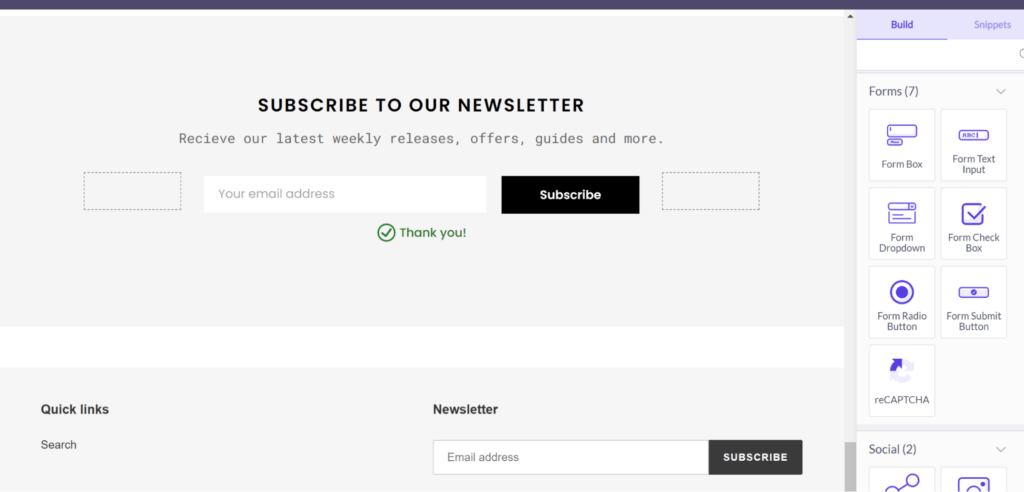
Analytics and reporting
Keep a close eye on email analytics to gauge what works and what doesn’t.
Monitoring your campaign performance helps you determine whether you need to adjust your email strategy, copy, content, layout, or some other element.
A/B testing capabilities
A/B testing allows you to experiment with various changes and identify which ones allow your emails to perform better.
Integrations
Being able to integrate with other channels along with Shopify or third-party apps allows you to maximize your email marketing capabilities.
By having more of your apps talk to each other, you can set important tasks on autopilot.
Pricing and extra features
Incredibly, some services offer these capabilities for free. Most of them, however, are priced differently.
Shopify email marketing apps typically charge a monthly subscription fee, but how much you pay increases based on:
- How many campaigns you run simultaneously
- Your number of contacts or subscribers
- The inclusion of discount codes and promos
- Dedicated live chat and email support
- Extra SMS features
- And more
Other services follow tiers where must-have features are only available through pricier subscriptions.
Nevertheless, some user reviews assert the added services are worth it.
What about the Shopify Email app?
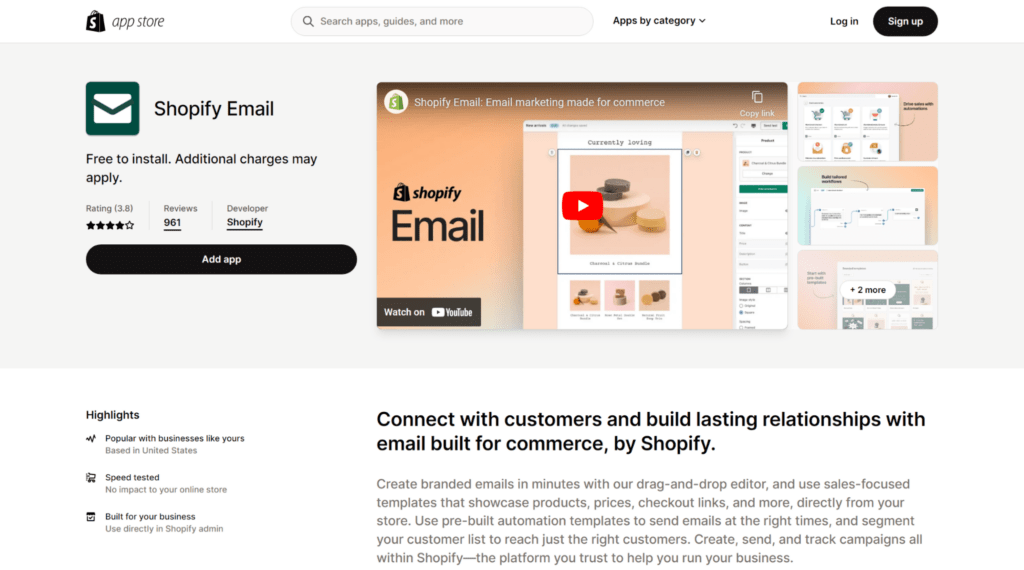
Shopify has their own default email service called Shopify Email, which is what many Shopify merchants use.
The Shopify Email app lets you create and send marketing emails directly from your Shopify admin. Its core features include:
- A drag-and-drop editor
- Email templates
- Pre-built automation templates
- Customer list segmentation
- Campaign tracking
Pros of Shopify Email
As a default app, Shopify Email has multiple upsides:
- It’s cost-effective: You can send 10K free manual or automated emails a month, and every 1,000 emails beyond that only costs $1.
- It’s easy to use: It’s integrated into your Shopify admin, where you can control all of its functions.
- It provides the necessities: It has basic marketing features such as templates and segmentation options.
Cons of Shopify Email
But it has downsides as well:
- It lacks advanced features: Other email marketing services offer A/B testing capabilities, workflows for other channels, and dedicated support, among others.
- It still needs improvement: Some users report running into glitches, bugs, and compatibility issues.
Is Shopify Email worth it?
Shopify Email is a good option for merchants who are just getting started and lack the budget for pricier services.
But for those seeking a feature-rich app, there are better options available.
#cta-visual-pb#<cta-title>Your emails are only as strong as your conversion channel<cta-title>Create a website that’s easy to navigate, explore, and purchase from with Shogun Page Builder.Start building for free
15 of the best Shopify email marketing apps
Here are some of the best email marketing tools currently available in the Shopify App Store.
| Shopify app | Rating | Free plan? | Best for | SMS? |
|---|---|---|---|---|
| Shopify Email | 3.8/5 | For up to 10,000 emails per month | Shopify-exclusive brands looking for a simple solution | No |
| Klaviyo | 3.9/5 | For up to 250 contacts | Brands with large subscriber bases | Yes |
| Omnisend | 4.8/5 | For up to 250 contacts | Merchants just starting out (and so will need the 24/7 support) | Yes |
| Mailchimp | 3.5/5 | For up to 500 contacts | Merchants who want to improve their buyer’s journeys | No |
| Seguno | 4.9/5 | For up to 250 contacts | Niche small businesses with small subscriber bases | No |
| Automizely | 4.8/5 | For up to 300 contacts | Merchants in need of email and SMS marketing | Yes |
| Privy | 4.6/5 | For up to 100 contacts | Brands that want precise and customizable email design | Yes |
| SmartrMail | 4.9/5 | For up to 250 contacts | Merchants looking to create highly targeted email campaigns | Yes |
| SMSBump | 4.9/5 | For up to 10K emails per month | Brands that need highly accurate communications for niche audiences | Yes |
| OrderlyEmail | 4.9/5 | No | Brands with a global audience | No |
| AVADA | 4.9/5 | For up to 500 contacts | Those who need the flexibility of automated newsletters and follow-ups | Yes |
| Flowio | 4.9/5 | For up to 1,000 emails | Merchants that want a single tool for email, SMS, and live chat | No |
| CM Commerce | 4.6/5 | No | Brands that want to build trust with their subscribers | No |
| ActiveCampaign | 4.5/5 | No, 14-day free trial | Merchants looking to build a strong email list with lead scoring | No |
| ONE | 5/5 | For up to two active campaigns | Merchants looking for a lightweight and affordable email marketing tool | No |
| POWR | 4.7/5 | For up to 25 submissions | Brands that already have an email tool and need to collect feedback or build their subscriber list | NA |
1. Klaviyo
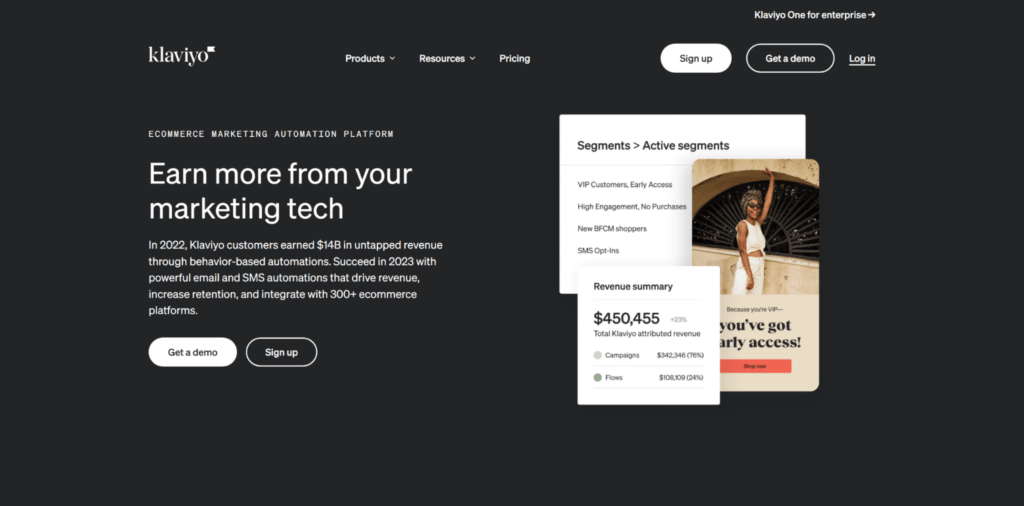
Rating: 3.9/5 stars
Klaviyo is a popular Shopify email marketing tool that offers advanced segmentation, automation, and analytics to create targeted campaigns.
Top features:
- Audience segmentation and predictive analytics
- Back in Stock, Price Drop, and Browse Abandon Shopify automations
- Real-time revenue data
- Dynamic coupon codes
- Integrations with third-party apps
What makes it special: In-depth analytics tools to measure and track your email ROI
Pros:
- User-friendly
- Competitively priced
- Free plan offers lots of opportunities
Cons:
- Customer support needs improvement
- Free plan has a low contact limit
Who it’s best for: Brands with large subscriber bases
Price: Free to custom
Free plan? For up to 250 contacts
#cta-mini-pb#Klaviyo integrates with Shogun to create a seamless subscription experience. Learn more
2. Omnisend
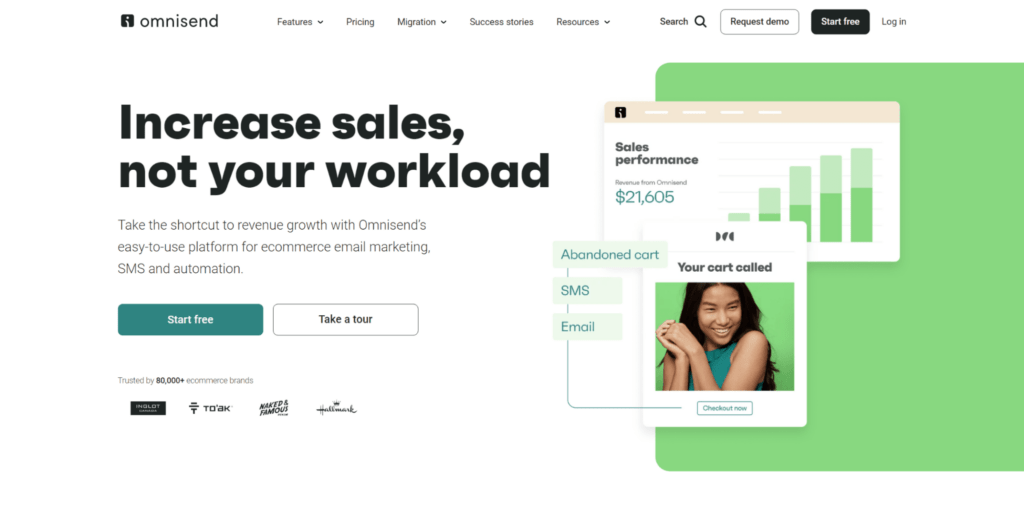
Rating: 4.8/5 stars
Omnisend is a powerful email marketing automation platform designed to streamline workflows and personalize content, helping you engage with customers consistently.
Top features:
- Professional email templates
- Pop-ups and signup forms
- Pre-built workflows and automations
- 24/7 live support
What makes it special: Includes live support with the free plan
Pros:
- Friendly, helpful, and professional support
- Easy to use
Cons:
- Users have encountered bugs and other technical issues
Who it’s best for: Merchants just starting out (and so will need the 24/7 support)
Price: Free to custom pricing
Free plan? For up to 250 contacts
3. Mailchimp
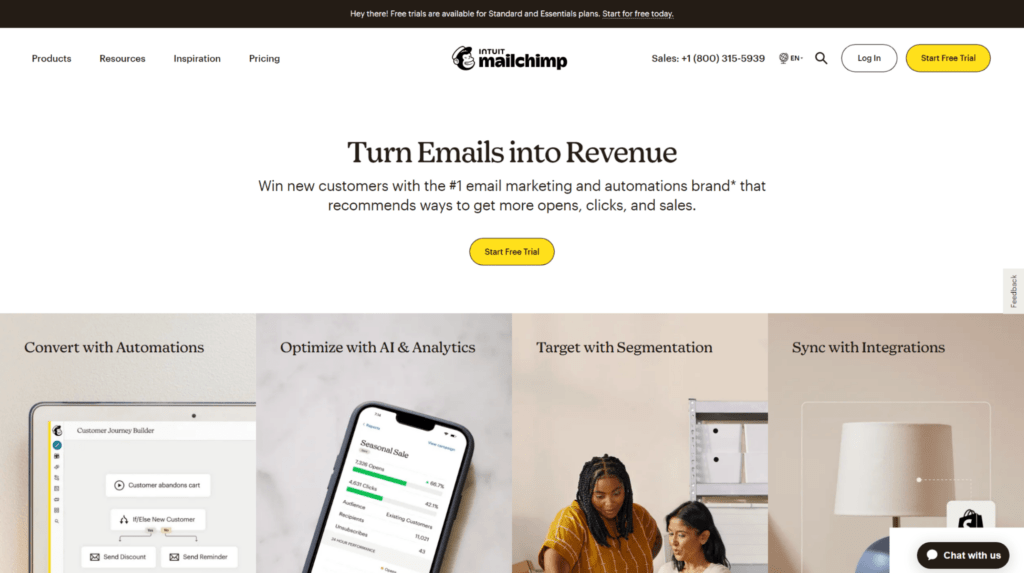
Rating: 3.5/5 stars
A well-known email marketing platform, Mailchimp integrates easily with Shopify. It excels at creating professional emails and nurturing customer relationships.
Top features:
- Forms and landing pages
- Insights powered by historical data
- Marketing CRM
- A/B testing
- Automated customer journeys
What makes it special: Robust features for enhancing customer experiences
Pros:
- Lower tier plan can support thousands of contacts
- Testing and automation capabilities
- Simple and user-friendly
Cons:
- Some users report inflated billing
Who it’s best for: Merchants who want to improve their buyer’s journeys
Price: Free to custom
Free plan? For up to 500 contacts
4. Seguno
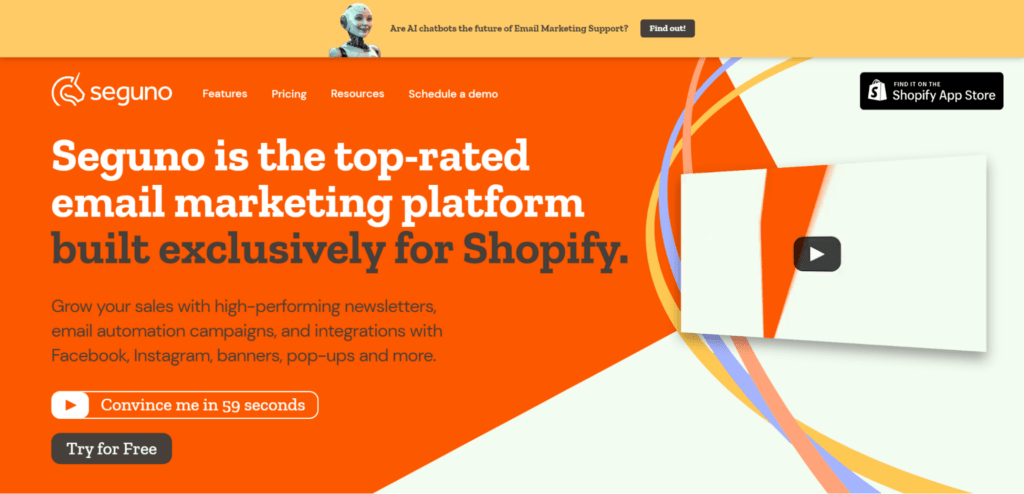
Rating: 4.9/5 stars
Seguno is a Shopify-exclusive intuitive email marketing tool. It provides automations, product recommendations, and more to simplify campaign creation.
Top features:
- Unlimited email sending
- Templates and Canva design capabilities
- Email and chat support
- Pre-built automations
- Pop-ups
What makes it special: Offers unlimited sending and many design options for free
Pros:
- Cost effective for those with smaller subscriber counts
- Excellent customer support
- User-friendly
Cons:
- Users report issues with their customer email list
- Expensive for merchants with numerous subscribers
Who it’s best for: Niche small businesses with small subscriber bases
Price: Free to $10 per 1K subscribers
Free plan? For up to 250 subscribers
5. Automizely
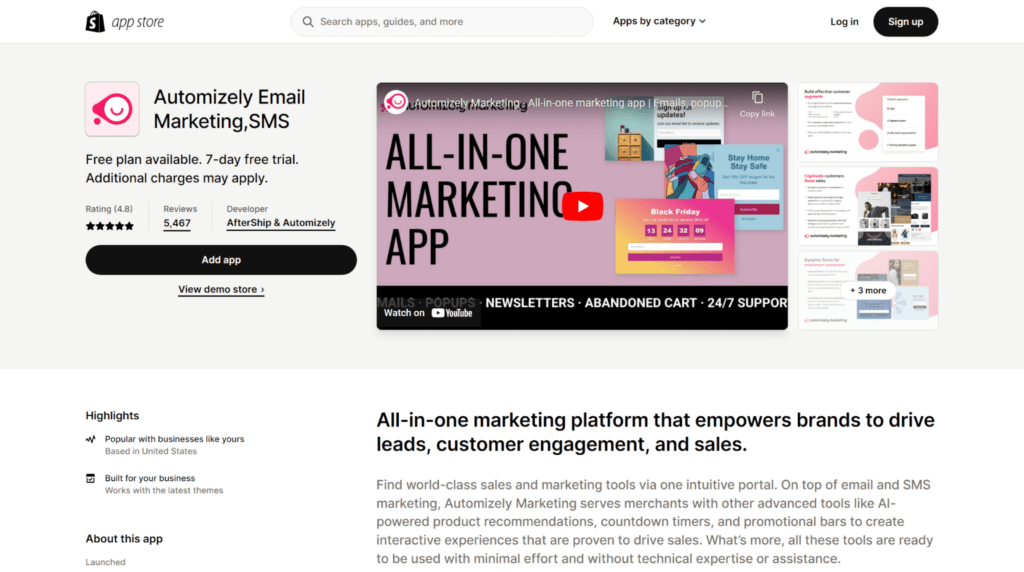
Rating: 4.8/5 stars
Automizely is a personalized marketing automation platform that encompasses email and SMS channels.
Top features:
- Behavior-based automated email flows
- Templates for both email and SMS
- A/B testing and performance monitoring
- Pop-ups, product recommendations, and countdown timers
What makes it special: Offers SMS marketing capabilities as well
Pros:
- Addresses multiple marketing channels
- Possesses conversion tools
- Good for abandoned checkout emails
Cons:
- Users have issues with initial setup
- Lacks testing features
Who it’s best for: Merchants in need of email and SMS marketing
Price: Free to $179/month
Free plan? For up to 300 contacts
6. Privy
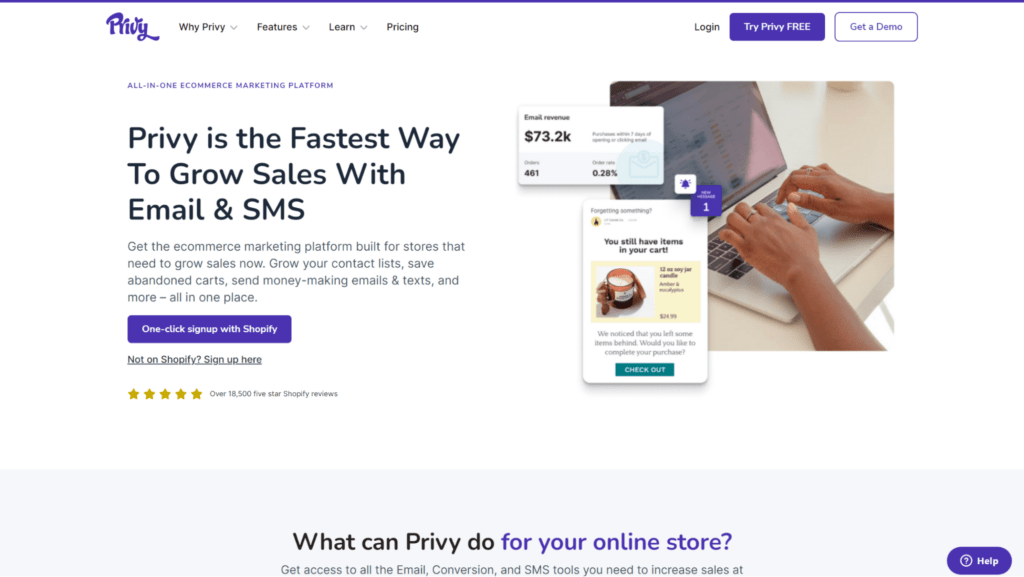
Rating: 4.6/5 stars
Another all-in-one ecommerce marketing platform, Privy is designed for creating targeted and personalized email and SMS campaigns.
Top features:
- Drag-and-drop email editor with pre-built templates
- Pop-up options for growing subscriber lists
- Advanced automations and targeting
- Expert onboarding, support, and coaching
What makes it special: Comes with a long list of conversion-focused email and web features
Pros:
- Intuitive and expansive editor
- Multiple design options
- Excellent customer support
Cons:
- Expensive
- Reviews gave pricing negative marks
Who it’s best for: Brands that want precise and customizable email design
Price:
- Free
- $30 for up to 1,000 contacts
- $45 for up to 2,000 contacts
- For larger contact lists, use Privy’s calculator
Free plan? For up to 100 contacts
7. SmartrMail
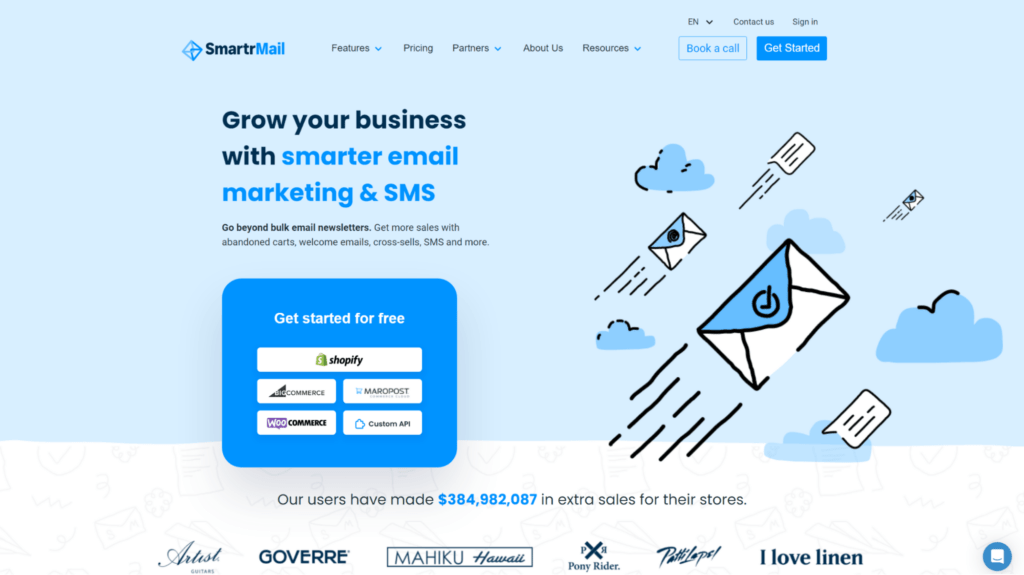
Rating: 4.9/5 stars
With the SmartrMail email marketing platform, you’ll enjoy exceptional personalization options for your automated workflows.
Top features:
- Machine learning
- Drag-and-drop automated flow builder
- Simple setup and one-to-one onboarding
- One-click integrations
- A/B testing
What makes it special: Advanced automations produce unique customer journeys
Pros:
- Buyer’s journey customizations
- AI personalized product recommendations
- Affordable
Cons:
Who it’s best for: Merchants looking to create highly targeted email campaigns
Price:
- Free
- $19/month for up to 1,000 subscribers, plus $0.0075 per extra subscriber
- $99/month for up to 5,000 subscribers, plus $0.01 per extra subscriber
Free plan? For up to 250 subscribers
8. SMSBump
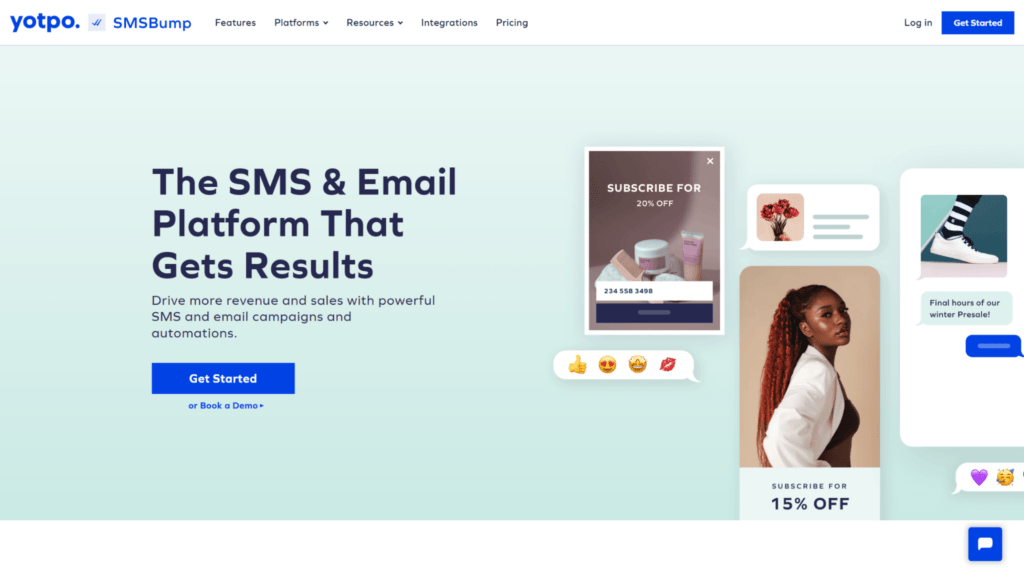
Rating: 4.9/5 stars
SMSBump is primarily focused on SMS marketing but offers powerful features for email campaigns as well.
Top features:
- Personalization options
- A/B testing
- Narrowly targeted segmentation
- Revenue attribution and tracking
What makes it special: Advanced targeting features allow for more precise campaigns
Pros:
- Precise segmentation
- Unlimited A/B testing
- Helpful support
Cons:
- Pricey
- Buggy
Who it’s best for: Brands that need highly accurate communications for niche audiences
Price:
- For plans: Free to $199/month
- For emails beyond 10K limit: $1.50 per 1,000 for next 90K, $1 per 1,000 beyond 100K
Free plan? For up to 10K emails per month
9. OrderlyEmails
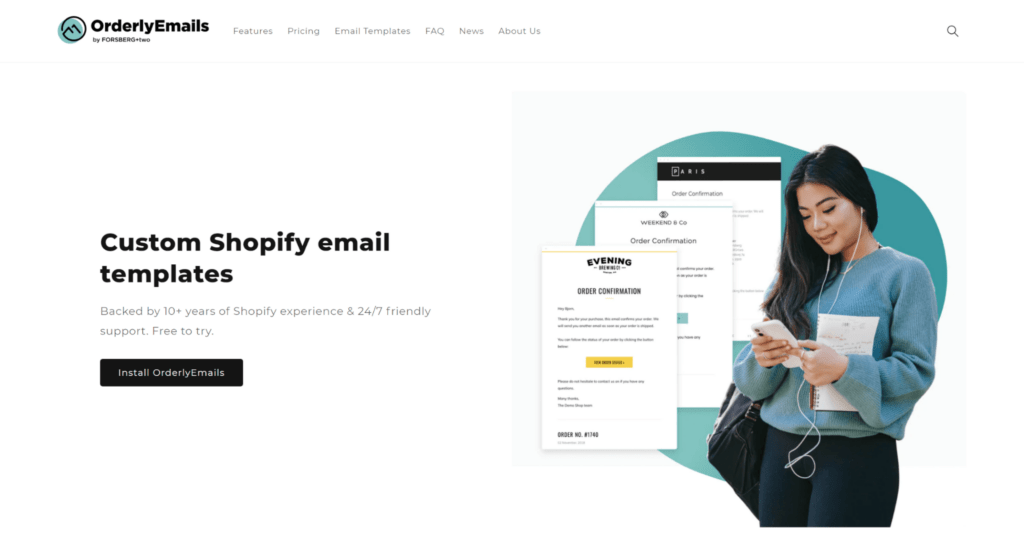
Rating: 4.9/5 stars
This email template tool was made primarily for maximizing the customization of your communications.
Top features:
- Professional email templates
- Countless design options
- Post-purchase discounts, upsells, and product recommendations
- Quick translation and multi-currency support
What makes it special: Numerous customization options, multiple currencies, and translation ease international marketing
Pros:
- Customizability
- Templates are regularly updated in line with Shopify updates
- Good for international audiences
Cons:
- Must be supplemented with other email marketing apps
- Some users find it expensive
Who it’s best for: Brands with a global audience
Price: $99/year per theme
Free plan? No
10. AVADA

Rating: 4.9/5 stars
AVADA is a marketing automation platform for omnichannel communications.
It provides powerful functionalities for email, SMS, form builders, and even offers a “spin to win” game that can be played by entering an email.
Top features:
- Workflow automations
- Newsletter campaigns and monitoring
- Lead capturing
- Email templates
- Audience segmentation and personalization
What makes it special: Actively engage and follow up with your audience through automations
Pros:
- Numerous automations
- Built for newsletters
- Easy to use
Cons:
- No testing capabilities
- Various reports of technical issues
Who it’s best for: Those who need the flexibility of automated newsletters and follow-ups
Price: Free to custom pricing
Free plan? For up to 500 contacts
11. Flowio
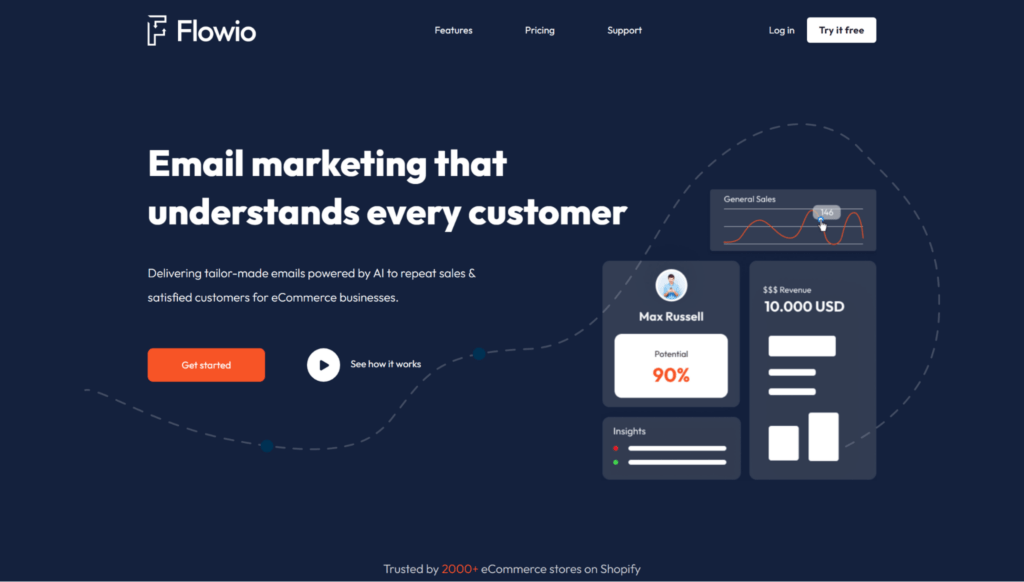
Rating: 4.9/5 stars
Flowio cuts down on your workload by automating email marketing workflows and streamlining customer experiences.
Top features:
- Personalized content
- Drag-and-drop editor
- Actionable insights
- Contact list management and segmentation
- SMS and live chat features
What makes it special: All-around solution for multiple communication channels
Pros:
- Multi-channel solution
- Minimal UI
Cons:
- Lacks advanced email marketing features
- Some issues with customer support
Who it’s best for: Merchants that want a single tool for email, SMS, and live chat
Price: Free to custom pricing
Free plan? For up to 1,000 emails
12. CM Commerce
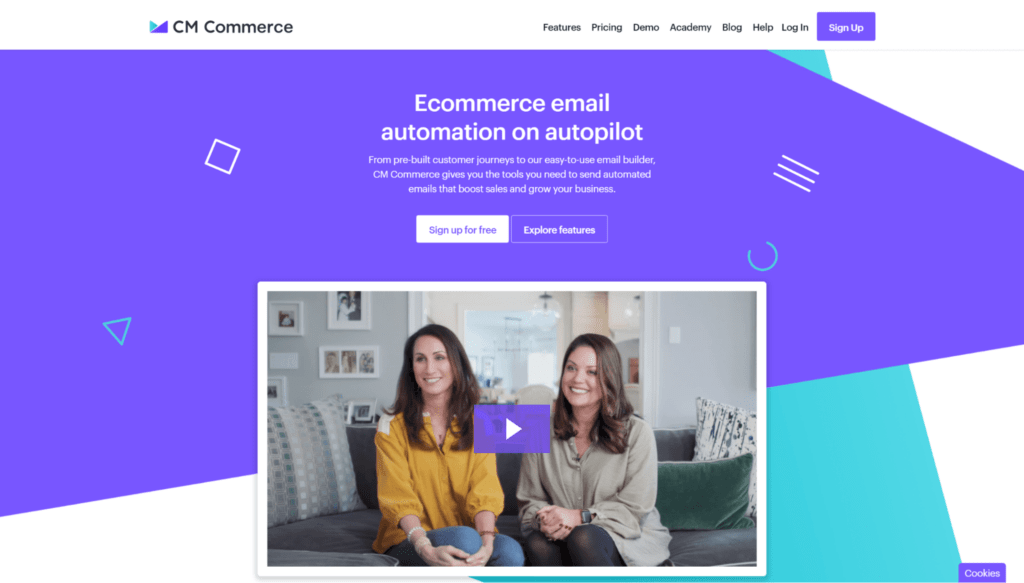
Rating: 4.6/5 stars
CM Commerce’s offering combines email marketing with user-generated content (UGC) tools to improve customer engagement and trust.
Top features:
- Pre-built automated journeys
- Drag-and-drop email builder
- Behavior-based segmentation
- Reporting and analytics
What makes it special: Lets you incorporate product reviews and ratings into your emails
Pros:
- UGC tools
- User-friendly
Cons:
- Some have issues with customer service
- Less sophisticated than other tools
Who it’s best for: Brands that want to build trust with their subscribers
Price: $9 to $2,399/month
Free plan? No
13. ActiveCampaign

Rating: 4.5/5 stars
ActiveCampaign provides numerous automations for not only email marketing but also lead generation, SMS marketing, and more.
Top features:
- Email marketing automations
- Personalized communications
- Contact and lead scoring
- Landing pages
- Built-in CRM
- Site and event tracking
What makes it special: Contact and lead scoring lets you assess individuals in your email list
Pros:
- Gauge specific subscribers with contact and lead scoring
- Easy customer segmentation
Cons:
- Some users have issues with revenue reports
Who it’s best for: Merchants looking to build a strong email list with lead scoring
Price: $29/month to custom pricing
Free plan? 14-day free trial
14. ONE
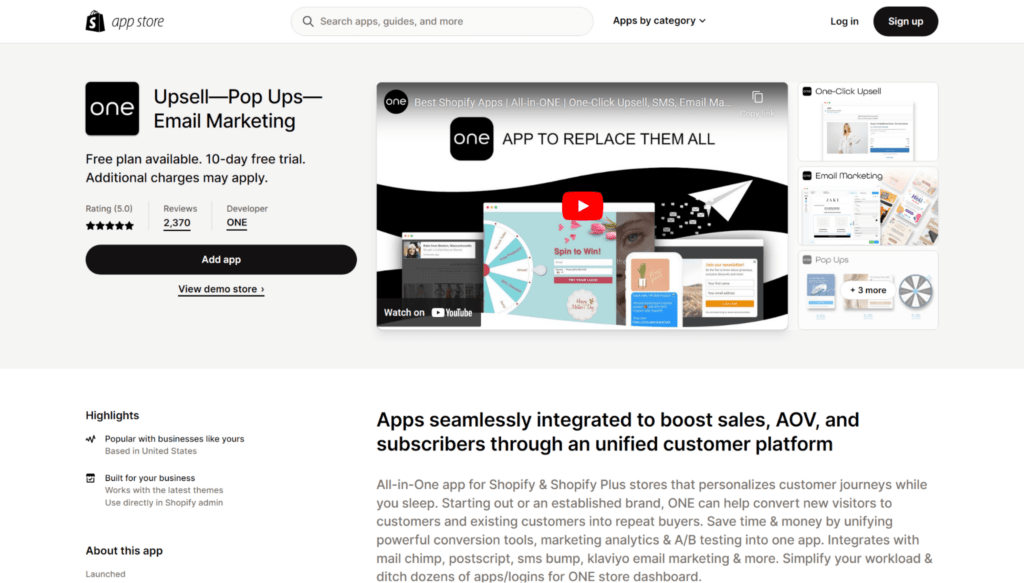
Rating: 5/5 stars
ONE is an affordable email marketing tool that personalizes customer journeys and improves store speed.
Top features:
- Optimized Async Post Script, page speeds, and SEO
- Email marketing automations
- A/B testing
- Integrations with third-party applications
- Conversion tools
What makes it special: Besides email marketing, this app also pays attention to website performance
Pros:
- Supports up to 50 active campaigns
- Various optimizations
- Lots of automation and upselling options
Cons:
- Supports only up to 50 customer profiles
- Some users can’t get the app to work
Who it’s best for: Merchants looking for a lightweight and affordable email marketing tool
Price: Free to $12/month
Free plan? For up to two active campaigns
15. POWR
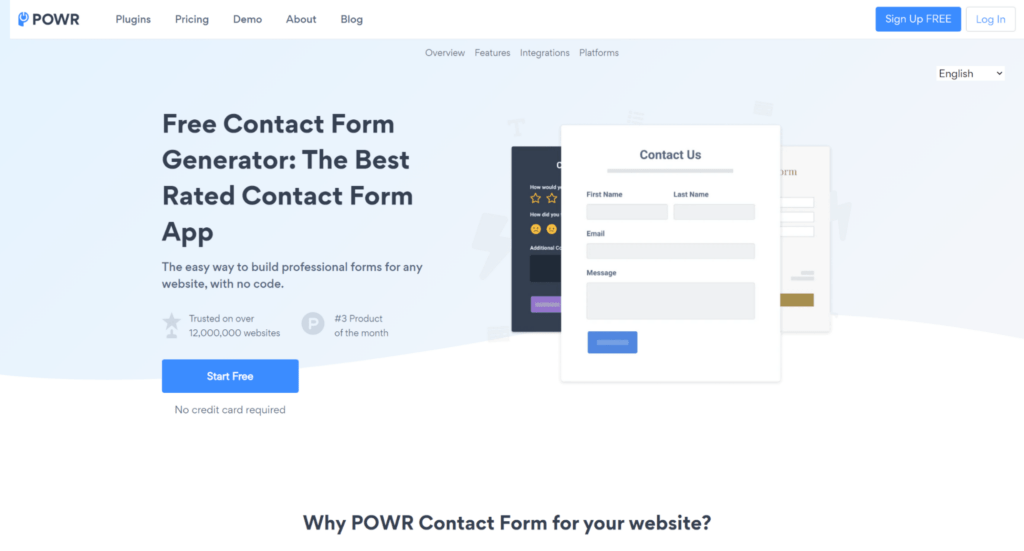
Rating: 4.7/5 stars
A versatile form builder tool, POWR helps you easily collect information from customers. It can be used for surveys or building a subscriber list.
Important to note, you cannot send emails through the POWR platform alone—you can use it alongside one of the email platforms mentioned above in this list.
Top features:
- Conditional logic for addressing different customer segments
- Abandoned cart emails
- Autoresponder emails
- Dashboard for centralized information
- Design options and templates
What makes it special: Customization options for collecting information from various segments
Pros:
- Fast and efficient support
- Personalization for customers
- User-friendly
Cons:
- Must be used with other email marketing tools
- Can be glitchy
Who it’s best for: Brands that already have an email tool and need to collect feedback or build their subscriber list
Price: Free to $89.99/month
Free plan? For up to 25 submissions
3 Tips to make your Shopify email marketing even more powerful
To cap things off, I’m sharing a few extra tips to help you take your Shopify email marketing to the next level.
Build a strong list
Your newsletter is useless if it fails to reach the right people—and that requires you to build your list. Here are some ways to do that:
- Strategically place forms in prominent locations across your website and other owned channels to capture the right audience.
- Use pop-ups to capture your visitors’ attention.
- Provide lead magnets, which are free resources like ebooks or white papers offered in exchange for visitors’ email addresses.
#cta-mini-pb#Add forms to any page of your website with Shogun and build your list efficiently with multiple angles and CTAs. Learn more
Make signing up worth it
Retain subscribers through engaging emails that have something relevant and interesting to offer. To provide your audience with valuable communications:
- Personalize your emails: Tailor your campaigns, offers, and content to their interests and behaviors.
- Segment your list: Create more targeted campaigns by sorting your list into specific segments. Base them on factors like location, purchase history, and engagement level.
- Offer incentives: Grow your audience and compel them to subscribe by offering discounts, early access to new products, helpful tips, and other rewards.
Test and optimize
Continually experiment with your emails’ voice, tone, offers, and more to see what works best. For maximum effectiveness, test the following as well:
- Subject lines: These are your best opportunities to make a strong first impression and capture attention. Try different subject lines and see which ones are opened most.
- Send times: Audience segments behave differently at various times of the day. Sending communications at different times will determine when people open and click through your emails the most.
- Content: Include different types of content, such as videos, GIFs, and product images. This shows you what resonates with your subscribers.
- Calls to action (CTAs): Play around with various CTAs to pinpoint which ones produce the highest conversion rates.
Shopify email marketing FAQs
What is the best email provider for Shopify?
This is subjective, as the right provider depends on your specific needs and budget.
So, make sure you thoroughly research your options, paying special attention to their features and pricing, and make your decision from there.
How do I add email marketing to Shopify?

Adding email marketing capabilities to your Shopify store is simple. All you have to do is integrate a third-party app or use Shopify’s default email marketing service.
I’ve broken down the specific steps below:
1. Visit the Shopify App Store
2. Navigate to Apps by category at the top
3. Select Marketing and conversion
4. Choose the Email marketing category
5. Pick an app
6. Click Add app on your chosen app’s page
Can you send marketing emails with Shopify?
Yes, you can. Simply choose between a third-party email marketing service or Shopify’s default one (I gave a quick rundown of how to do it in the previous question).
What’s the most popular email marketing software?
Some of the most popular services for email marketing are:
1. Klaviyo
2. Omnisend
3. Privy
4. Mailchimp
Is Shopify email marketing free?
Shopify’s default email marketing service isn’t completely free: You get 10K emails per month at no cost, but every one exceeding that limit will cost you $1.
As for third-party apps, these offer free plans.
However, they charge more for advanced features, larger contact and subscriber lists, and a higher number of simultaneous campaigns, among other perks.
Is Klaviyo better than Shopify Email?
Klaviyo boasts more advanced segmentation and automation options, which is advantageous for those with narrower audiences.
On the flip side, it’s more expensive than Shopify Email, and its $20 subscription only accommodates up to 500 contacts (and you’ll need to upgrade as you grow).
It also has a learning curve, meaning it may require more expertise to use it effectively.
The choice between Klaviyo and Shopify Email will largely depend on your needs and finances. If you can afford its more advanced features, go for Klaviyo.
If you only need the necessities and have a tight budget, opt for Shopify Email.
Boost your business with a Shopify email marketing tool
Shopify email marketing helps you engage more with your customers, drive sales, and grow your business.
With a wide variety of tools available on Shopify’s app store, you’re sure to find an option that fits your needs.
During your search, remember to take into consideration:
- Your budget
- The features you need
- The level of expertise necessary to set up and gain the most from the app
Incorporate the tips outlined in this article as well to find your next marketing asset.
Armed with this knowledge, you can create effective email campaigns and achieve results that further your business goals.
#cta-visual-pb#<cta-title>Make the most of your email click-throughs<cta-title>Create a website that turns newsletter clicks into conversions with Shogun Page Builder.Start building for free

Rachel Go
Rachel is a remote marketing manager with a background in building scalable content engines. She creates content that wins customers for B2B ecommerce companies like MyFBAPrep, Shogun, and more. In the past, she has scaled organic acquisition efforts for companies like Deliverr and Skubana.

